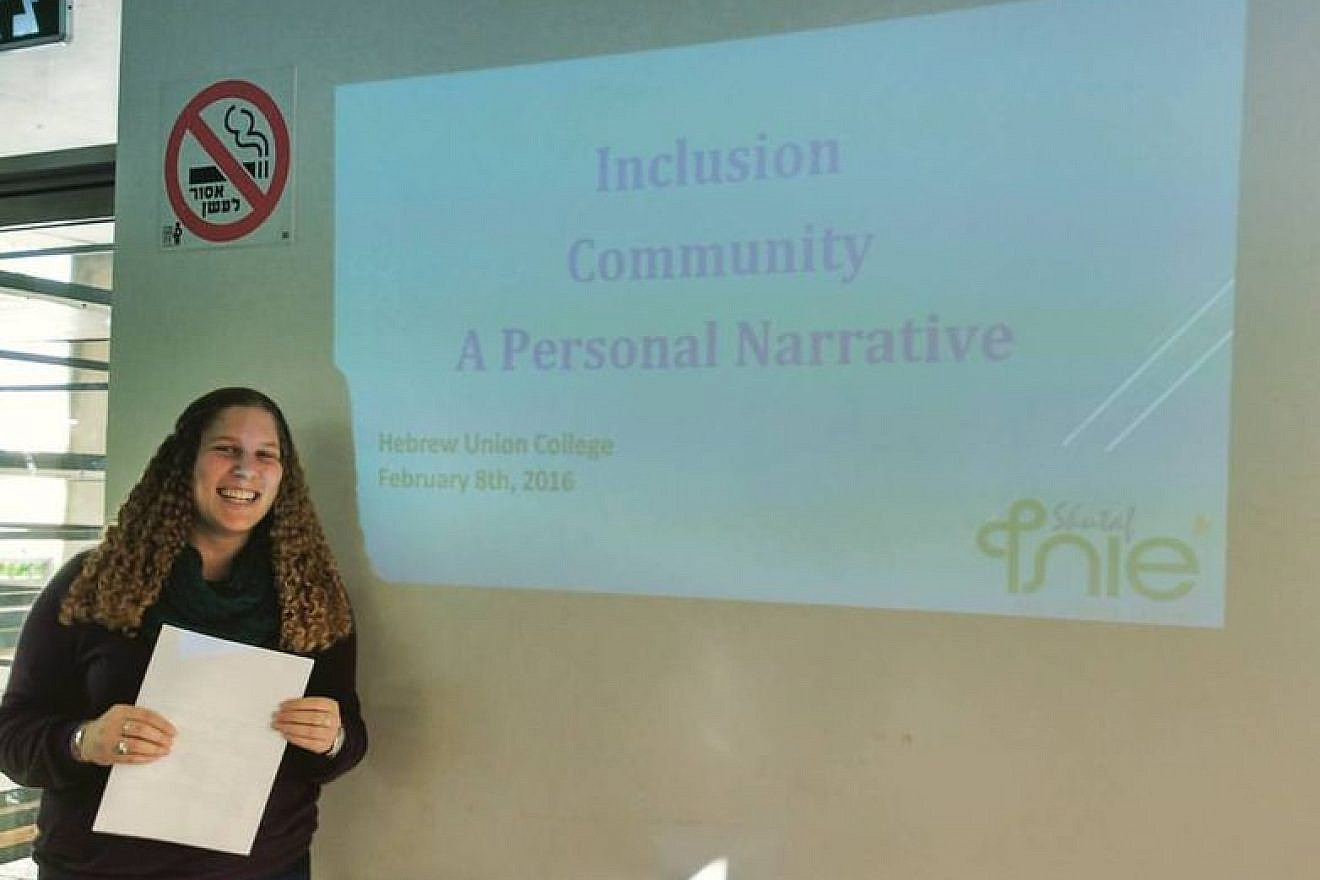Staci Blumenfeld is deeply curious about Judaism. She finally got to dig in over the past six weeks.
“I have long had the desire to understand who I am, where my ancestors come from, the value and faith of Judaism and how the Torah applies to our life, not just as a Jewish person but as a human being,” Blumenfeld wrote to JNS last month. “I am now catching up.”
Growing up, the Palm Harbor, Fla. resident, who is deaf, couldn’t follow Hebrew school instruction about Torah passages and other religious texts, since she relies heavily on lip reading. When she learned sign language, she took classes taught by deaf rabbis.
“My eyes opened up, my heart glowed and my mind thrived,” she told JNS.
Blumenfeld was part of a six-week, online “Love, Loss and Wisdom” pilot program run by the Manhattan-based Florence Melton School of Adult Jewish Learning and the Jewish Deaf Resource Center of Hartsdale, New York, which just finished on Nov. 15. Sessions addressed “making sense of suffering,” “making time for the sick” and the messianic era in Judaism, among other subjects.
The first session fell out on Oct. 11, four days after Hamas’s terrorist assault on Israel. Blumenfeld told JNS after the course had completed that she is grateful to the instructor, Rabbi Rebecca Dubowe, of Bloomington, Ill., for affording participants “the safe space to have this dialogue at the very beginning of this course, which took place one week after the Hamas terror attacks.
“The timing of this course and the incident with Israel and Hamas was a pure coincidence,” she added. “I was glad to have the opportunity to discuss the most horrific incidents in Israel with my class. The discussion really gave me comfort that we all were not alone.”
Curriculum tweaks
Dubowe, who identifies as the first deaf woman rabbi, had taught an introduction to Judaism course at the Union for Reform Judaism. When students requested a more expansive program, Susan Cohen, the president of the Jewish Deaf Resource Center, teamed up with Melton.
“It took a long time, but we figured out how to partner,” Elisa Blank, Melton’s director of community partnerships, told JNS. “We had to make special PowerPoints for them and change the curriculum a little.”
It was also a challenge to create accurate closed captioning—particularly when switching between English and Hebrew—to accompany lessons, Blank added.
The Zoom-based course, which used American Sign Language, was limited to 20 students so everyone could fit on the same screen. That’s especially important so that each student can see when someone else is signing.
The best lip readers can catch about 30% of spoken English, “which meant I missed out on 70% of what was spoken,” Blumenfeld said.
To compensate for the inherent challenges in learning as a deaf person, Blumenfeld reads textbooks on her own ahead of classes to familiarize herself with certain vocabulary words.
Going into the course, Blumenfeld told JNS that all she wanted was “to learn everything about Judaism, especially from a deaf rabbi fluent in American Sign Language.
“My goal was to gain knowledge about Judaism and to better understand the different perspectives on a variety of topics, such as Jewish views on death, Jewish life cycle and more,” she added. “At the end of the course, I had a better understanding about Jewish views on preparing for death, burial and afterlife. It also gave me comfort and peace about my father’s death.”
New opportunities
The UJA-Federation of New York provided a grant to lower the cost of the program, removing one more potential barrier from the learning process, Blank told JNS.
The course was adapted from Melton’s core curriculum, as part of a series called “Living Wisdom.” The “Love, Loss and Wisdom” course “confronts pain and death, but it’s about understanding the Jewish view of the afterlife and of finding consolation,” Blank said. “There’s always a personal viewpoint to it.”
The course is proof of the growth of Jewish education for the deaf community, according to Blank. With the exception of a few synagogues that catered exclusively to the deaf, those with disabilities were sometimes made to feel unwelcome or disruptive as recently as 50 years ago, she said.
These days, sign language is more common and “it’s all about inclusivity in the synagogue and everywhere else,” Blank said.
Ahead of the course, Blumenfeld told JNS how much she appreciated the opportunity. “I feel like the kindergarten child who is excited to begin school for the first time,” she said.


























